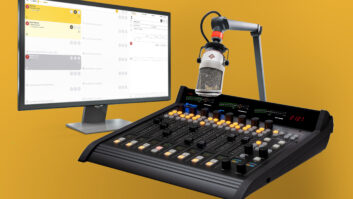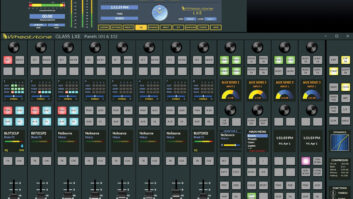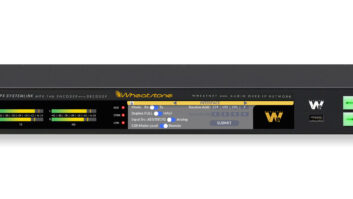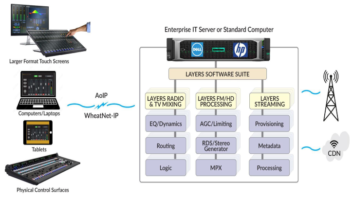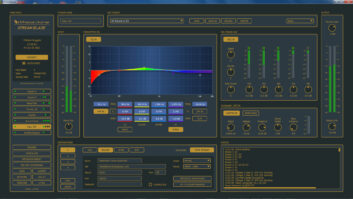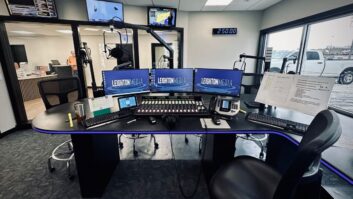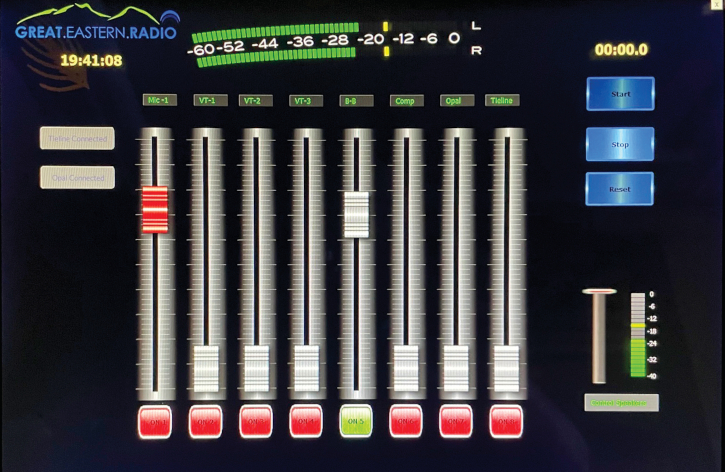
The author is chief technology officer, Great Eastern Radio.
What a difference a year makes.
Before COVID-19, the ideal console was one that could fit every conceivable studio permutation from here to the next decade. In fact, that’s what we got when we purchased the Wheatstone D75 consoles and TDM router system for Great Eastern Radio’s regional studios in West Lebanon, N.H.
That worked until last March, when we sent our staff home and discovered that we didn’t need all the studio space we thought we did. We decided to rent out half of our three-story facility to a bank and consolidate studios for eight stations into a little over a floor.
I had 30 days to move six studios into half the space.
Custom Interfaces
Those big, capable D75s had to go, along with miles and hundreds of pounds of wiring, which would be replaced by one Cat-5 cable.
I have been buying WheatNet-IP I/O Blades one or two at a time over the years to manage HD Radio audio, figuring the TDM router would eventually be replaced by WheatNet-IP audio networking. I already had one foot firmly in the IP world, so it was a simple matter of adding to that world with an IP-12 console for the main studio.
The IP-12 is a nice entry-level IP audio console that takes up a lot less space than the D75, but because it is self-contained, it has a similar feel as the D75.
[Read more Radio World articles about audio consoles and mixers]
I ordered the IP-12, plugged it into my existing Blades, and an AoIP studio was born. For talent, the change was minimal, which was great, because I had some big changes in store for the rest of the move.
Due to COVID it had become increasingly evident that talent could do a lot from home, but at times they still needed to be able to voicetrack or produce a show in an acoustically treated room with all the right mixing and processing tools.
So we purchased 4 x 8-foot WhisperRoom with a small dropdown table where our talent could park their laptops or tablets, plug into the WheatNet-IP through an Ethernet connection and call up sources and route audio and processing from a virtual mixer on their laptops that I created using ScreenBuilder.
The idea of setting up “glass” consoles in Whisper Rooms was partially borne out of the necessity to save space and partly because these could serve a real need. Wheatstone’s ScreenBuilder made making a custom “glass” console with a touchscreen interface fast and easy.
ScreenBuilder is an app for building your own interfaces into WheatNet-IP. In my case, I was able to drop and drag metering, faders and buttons onto a screen and script them to tie into the elements in the studio.
For example, I tied in virtual tallies to the Comrex Opal codec gateways in the main studio/rack room so that when a guest joins a show remotely, our talent will be able to see that he’s connected.
Most of the scripting was done using ScreenBuilder’s Wizard although I did create a few lines of code myself and “borrow” a few lines from a Wheatstone integrator (thanks, Danny Teunissen) for a few minor customizations.
Radio World User Reports are testimonial articles intended to help readers understand why a colleague chose a particular product to solve a technical situation.
More info: Jay Tyler at Wheatstone in North Carolina at 1-252-638-7000 or visit www.wheatstone.com.





